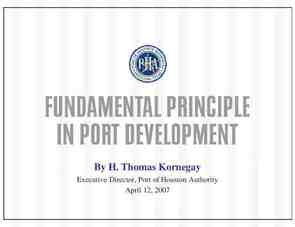Why Do Historians Disagree about Life On The Plantations? By Mr
17 Slides1.02 MB
Why Do Historians Disagree about Life On The Plantations? By Mr Caslin www.SchoolHistory.co.uk
What is a plantation? It is a farm that grows only one crop – such as tobacco, sugar or cotton. Slaves were used to do all of the hard work whilst the white owners collected the profits.
So, why do historians disagree about the life of people on the plantations? Historian One: Life on the Plantations was easy for the slaves. They got to work outside in the pleasant sunshine and spent time with their families. Historian Two: Life on the Plantations was hard, back breaking work. Slaves were often treated badly and had little time to look after their families.
We all interpret evidence in different ways Story writers, historians, artists, museums. History is always changing! Beware of interpretations – they can be wrong.
Beware of BIAS. This is when a person only considers one side of the story. Why might they do this? Liverpool 1 Man Utd 0 Liverpool battered the devils in a fantastic match. Man Utd were useless. Written By A.Scouser (from Liverpool)
Look at this picture . What might be happening in this picture? Could you be mistaken? Might it be something else?
This is a plantation. What is happening here? Describe what you see.
Here is a scene from life on a plantation. What are they doing? Is it hard work? Would you like to do it? Would you do it for NOTHING? No pay?
Examine this scene. How do they look? What are their clothes like? What do you think they have been doing? How old are they? How do you think they are feeling?
Look at these living conditions Who would live in a house like this? (IT IS FROM A PLANTATION!)
Now look at these homes . Who would live in a house like this? How is it different from the previous house? Can you point out any of the positive aspects of the house?
Why do historians disagree about life on the plantations? Bias affects our judgment. Evidence can be looked at in several ways. Opinions are our personal views on a subject. Let’s try to be biased to show how historians can disagree with each other . Split into two groups – historian one and two. Use the sources to create a biased view of life on the plantations
Evidence
You can also use written sources. The slaves got their allowance every Monday night of molasses, meat, corn meal, and a kind of flour called "dredgings" or "shorts." Perhaps this allowance would be gone before the next Monday night, in which case the slaves would steal hogs and chickens. Then would come the whipping-post. Master himself never whipped his slaves; this was left to the overseer. We children had no supper, and only a little piece of bread or something of the kind in the morning. Our dishes consisted of one wooden bowl, and oyster shells were our spoons. This bowl served for about fifteen children, and often the dogs and the ducks and the peafowl had a dip in it. Sometimes we had buttermilk and bread in our bowl, sometimes greens or bones. ‘Narrative of the sufferings of Lewis Clark 1845’
(2) Francis Fredric, Fifty Years of Slavery (1863) Slaves every Monday morning have a certain quantity of Indian corn handed out to them; this they grind with a handmill, and boil or use the meal as they like. The adult slaves have one salt herring allowed for breakfast, during the winter time. The breakfast hour is usually from ten to eleven o'clock. The dinner consists generally of black-eyed peas soup, as it is called. About a quart of peas is boiled in a large pan, and a small piece of meat, just to flavour the soup, is put into the pan. The next day it would be bean soup, and another day it would be Indian meal broth. The dinner hour is about two or three o'clock; the soup being served out to the men and women in bowls; but the children feed like pigs out of troughs, and being supplied sparingly, invariably fight and quarrel with one another over their meals. 5) Annie L. Burton, Memories of Childhood's Slavery Days (1909) The slaves got their allowance every Monday night of molasses, meat, corn meal, and a kind of flour called "dredgings" or "shorts." Perhaps this allowance would be gone before the next Monday night, in which case the slaves would steal hogs and chickens. Then would come the whipping-post. Master himself never whipped his slaves; this was left to the overseer. We children had no supper, and only a little piece of bread or something of the kind in the morning. Our dishes consisted of one wooden bowl, and oyster shells were our spoons. This bowl served for about fifteen children, and often the dogs and the ducks and the peafowl had a dip in it. Sometimes we had buttermilk and bread in our bowl, sometimes greens or bones.






















